Glasgow House, built in the early 1800s, was named after the 5th Lord Glasgow, James Carr-Boyle, born on 10th April 1792, the second son and third child of George Boyle, 4th Earl of Glasgow, and his wife Lady Augusta Hay, third daughter of James Hay, 15th Earl of Erroll. Although it is pure speculation, it was probably given to 5th Lord Glasgow in 1813 on his coming of age. James, 5th Lord Glasgow, became a Captain in the Royal Navy and was later MP for Ayrshire between 1839 and 1843, but his passion was for field sports, hunting, foxhunting and horse racing. Despite having magnificent stables in the grounds of Glasgow House, and having wonderful training facilities and gallops on his doorstep, Lord Glasgow was not a lucky racehorse owner. He was stubborn and would only name his racehorses after they had proved themselves on the racecourse. At times this proved almost comical, for at one time he called his horses, Give Him a Name, He Hasn't Got a Name, and He Isn't Worth a Name, but at other times it was distressing, for he was known to have attended gallops and if his horse underperformed then he occasionally had the horse shot immediately after the gallop. One prominent newspaper described him as,'Touchy, crotchety, headstrong and full of eccentricites, but despite all of his foibles he had a warm heart for his contemporaries. He was the embodiment of honesty and honour'. His Middleham House was not known as Glasgow House until sometime later, and frequently when he was in the town he chose not to reside at his house, but to stay at the White Swan Hotel. Although most of his horses were average, at best, he did win a Classic, the 1864 2000 Guineas with General Peel (SR 1948). He died on 11th March 1869, but the House and stables named after him have sent out many winners of prominent races since his death. In his will he left his horses to be divided between his best racing friends General Peel and George Payne, but was also mindful of someone he might have wronged during his lifetime, Colonel Forester, who he had frequently blackballed to prevent the Colonel from bcoming a Jockey Club Member, leaving him a large legacy.
1815-1828 James Croft
James Croft, born at East Witton near Middleham in 1786, was the great grandson of John and Dorothy Croft, one-time innkeepers of the Fox and Hounds. He began his training career at Tupgill for John Lonsdale, and could be considered as his assistant at that time, before moving on to Glasgow House, where he trained for some considerable time, although it was not known by that name in the early days. In 1814 James married Mary Lonsdale, daughter of racehorse trainer John Lonsdale, at Coverham Church and the couple were blessed with 2 children, Betsey in 1814 and John Janson in December 1815. Tragically, Mary and John Janson died shortly after his birth, and James moved with Betsey to Glasgow House to continue his own training career. One of the most prolific winners for Croft was The Duchess, who won the 1816 St Leger at Doncaster. Originally named Duchess of Leven, and owned by William Wilson until she won the 1816 Pontefract Gold Cup in early September, she was sold to Sir Bellingham Graham after the victory, and it was Sir Bellingham who renamed her The Duchess before she won the Doncaster St Leger. In 1818 Sir Bellingham sold The Duchess to John George Lambton who maintained ownership for the rest of his races.
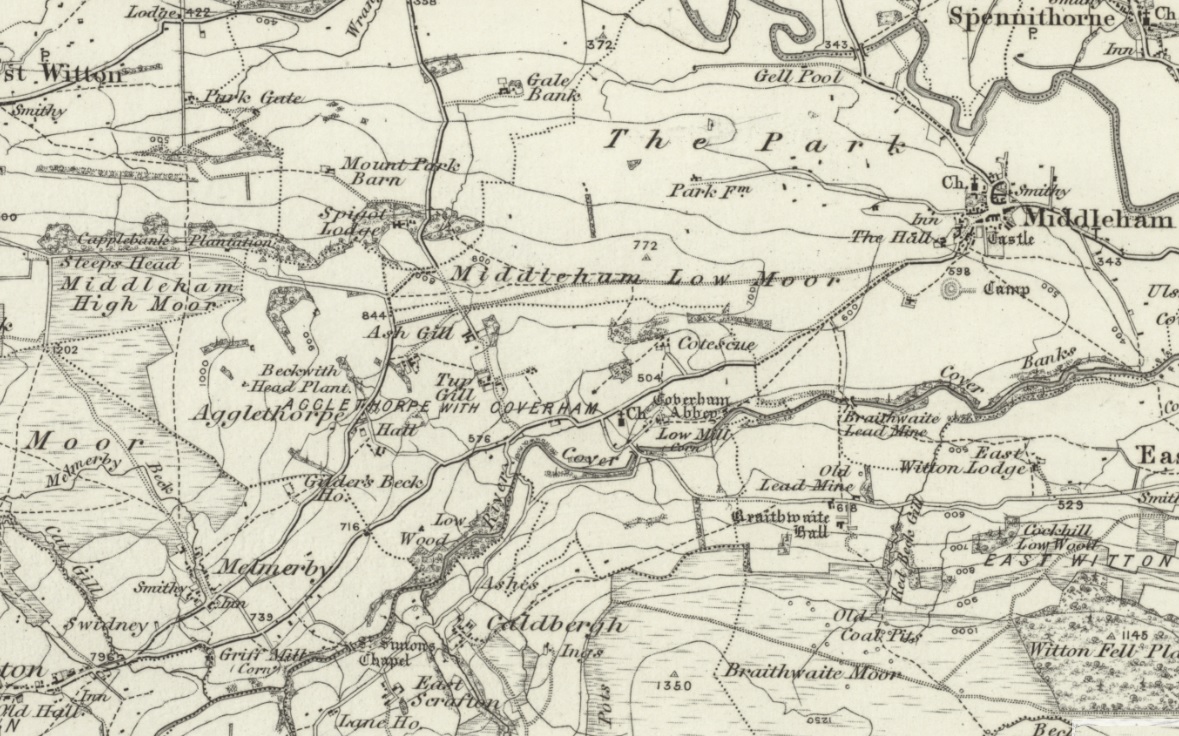
That 1816 St Leger victory was not the first for James Croft, for he had won it the previous year with Filho da Puta by Haphazard out of Mrs Barnett. At the time of the horse being foaled on Tuesday 14th April 1812 Sir William discovered his wife was having an affair and named the horse Filho Da Puta which means Son of a Bitch in Portugese. The horse was sold to Sir William Maxwell and raced in his colours for the majority of 1815, winning the St Leger and Doncaster Club Stakes. Sir William Maxwell died in 1815 and the horse was sold to Mr T Houldsworth for 3000 guineas who moved it to John Scott prior to winning the 1815 Richmond Gold Cup. The next season he won the 1816 Doncaster Cup and Dundas Stakes.

Filho da Puta, by Haphazard out of Mrs Barnett, was bred by Thomas Hornby Morland on a haras, or stud farm, owned by Sir William Barnett, a businessman who had spent some time in Portugal. At the time of the horse being foaled on Tuesday 14th April 1812 Sir William discovered his wife was having an affair and named the horse Filho Da Puta which means 'Son of a Bitch' in Potugese. The horse was sold to Sir William Maxwell and raced in his colours for the majority of 1815, winning the St Leger and Doncaster Club Stakes. Sir William Maxwell died in 1815 and the horse was sold to Mr T Houldsworth for 3000 guineas, who moved it to John Scott prior to winning the 1815 Richmond Gold Cup. The next season he won the 1816 Doncaster Cup and Dundas Stakes.
1815 St Leger at Doncaster FILHO DA PUTA (SR 2002) evens favourite, owned by Sir William Maxwell, trained by James Croft and ridden by John Jackson
1815 Doncaster Club Stakes FILHO DA PUTA 2/5 fav, owned by Sir William Maxwell, trained by James Croft and ridden by John Garbutt
1815 Richmond Cup FILHO DA PUTA 1/3 favourite, owned by Mr Thomas Houldsworth, trained by James Croft and ridden by F Boynton
1816 Doncaster Cup FILHO DA PUTA 1/2 fav owned by Mr Thomas Houldsworth, trained by John Scott and ridden by F Boynton
1816 Dundas Stakes at Richmond FILHO DA PUTA 1/2 fav owned by Mr Thomas Houldsworth, trained by John Scott and ridden by John Jackson
1816 Pontefract Gold Cup DUCHESS OF LEVEN owned by William Wilson, trained by James Croft and ridden by Ben Smith
1816 St Leger at Doncaster THE DUCHESS (SR 2030) 12/1 owned by Sir Bellingham Graham, trained by James Croft and ridden by Ben Smith
1817 Pontefract Gold Cup THE DUCHESS 1/2 fav owned by Sir Bellingham Graham, trained by James Croft and ridden by Ben Smith
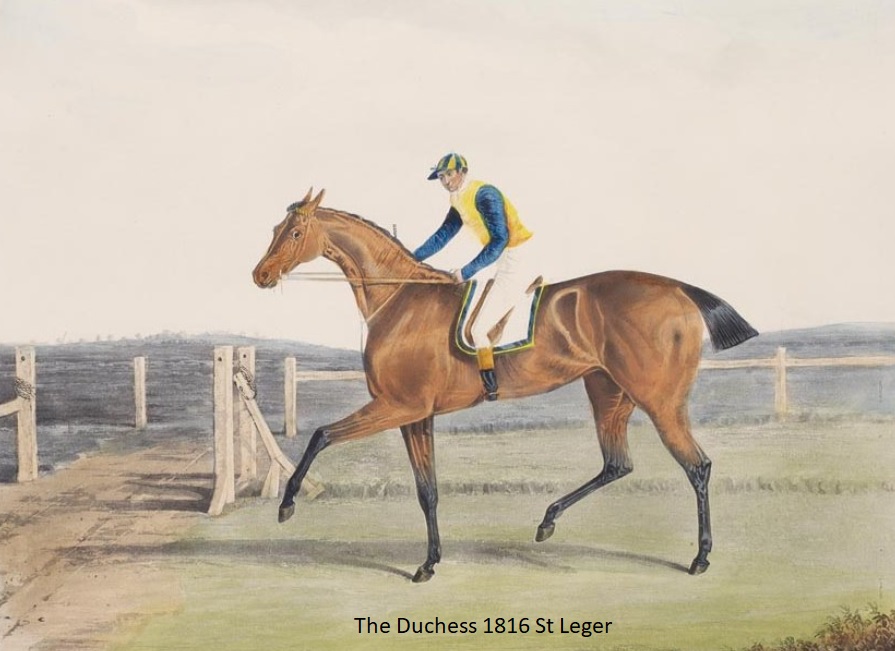
1817 Doncaster Stakes THE DUCHESS 1/2 fav owned by Sir Bellingham Graham, trained by James Croft and ridden by Ben Smith
1817 Doncaster Club Stakes THE DUCHESS 4/7 fav owned by Sir Bellingham Graham, trained by James Croft and ridden by Ben Smith
1817 Richmond Gold Cup THE DUCHESS owned by Sir Bellingham Graham, trained by James Croft and ridden by Ben Smith
1818 York Gold Cup THE DUCHESS owned by John George Lambton, trained by James Croft and ridden by Ben Smith
1818 Great Subscription Purse at York THE DUCHESS 2/1 owned by John George Lambton, trained by James Croft and ridden by Ben Smith
1819 Gosforth Stakes at Newcastle THE DUCHESS owned by John George Lambton, trained by James Croft and ridden by Ben Smith
1819 Newcastle Gold Cup THE DUCHESS owned by John George Lambton, trained by James Croft and ridden by Ben Smith
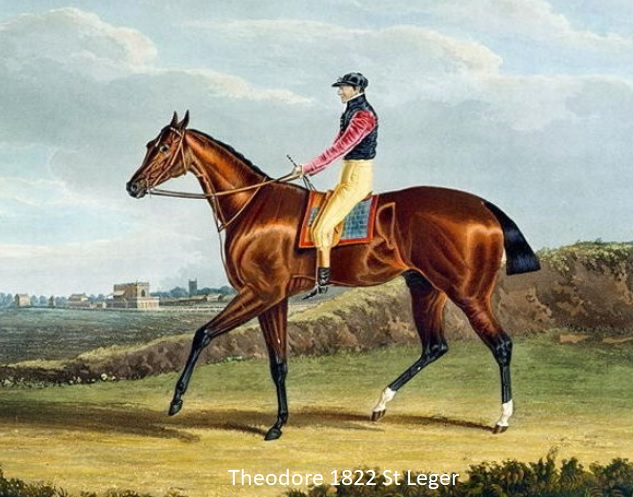
Theodore, a bay horse by Woful out of a Coriander mare, had a small white star and two white socks and was bred by Hon Edward Petre. He was the younger son of 9th Baron Robert Petre, and was a keen sportsman and fearless gambler who sent his colt to Middleham to be trained at Glasgow House by James Croft. For the most important races, run between 1822 and 1824, Theodore was owned by Petre, but in 1825 he sold the Classic winner to W Carleton, a Scott who then campaigned the horse in Scotland, winning the Edinburgh Gold Cup and City Members Plate.
1822 Old Stakes at Catterick Bridge THEODORE 2/5 fav owned by Hon Edward Petre, trained by James Croft and ridden by John Jackson
1822 York Spring St Leger THEODORE 5/4 fav owned by Hon Edward Petre, trained by James Croft and ridden by John Jackson
1822 XYZ Stakes at Newcastle THEODORE owned by Hon Edward Petre, trained by James Croft and ridden by John Jackson
1822 St Leger at Doncaster THEODORE (SR 1891) 200/1 owned by Hon Edward Petre, trained by James Croft and ridden by John Jackson
1824 Manchester Gold Cup THEODORE owned by Hon Edward Petre, trained by James Croft and ridden by William Scott
1825 Edinburgh Gold Cup THEODORE owned by W Carleton
1825 Edinburgh City Members' Plate THEODORE owned by W Carleton

Jerry, a large black horse by Smolensko out of Louisa, stood 15.3 hands high and was bred and owned by Richard Oliver Gascoigne. He sent the horse to be trained by James Croft at Glasgow House, Middleham, and the horse had a successful campaign, culminating in winning the 1824 St Leger, after which Gascoigne sold him to Lord Kelburne for 2000 guineas.
1824 York St Leger Stakes JERRY 5/2 owned by Richard Oliver Gascoigne, trained by James Croft and ridden by H Edwards
1824 XYZ Stakes at Newcastle JERRY owned by Richard Oliver Gascoigne, trained by James Croft and ridden by H Edwards
1824 St Leger at Doncaster JERRY (SR 1902) 9/1 owned by Richard Oliver Gascoigne, trained by James Croft and ridden by Ben Smith
In the latter part of his training career James was supported by former Middleham trainer William Collinson who brought 18 years of training experience to Glasgow House and became Croft's assistant. William lived at nearby East Witton and died on 4th January 1827.
Having won the St Leger twice so early on in his career, James got a taste for the race, but he could never have envisaged the feat he was to achieve in the 1822 St Leger where he had 4 runners, the least fancied of which was Theodore at 200/1. Theodore, a bay horse by Woful out of a Coriander mare, had a small white star and two white socks and was bred by Hon Edward Petre. He was the younger son of 9th Baron Robert Petre, and was a keen sportsman and fearless gambler who sent his colt to Middleham to be trained at Glasgow House by James Croft. For the most important races, run between 1822 and 1824, Theodore was owned by Petre, but in 1825 he sold the Classic winner to W Carleton, a Scott who then ran then campaigned the horse in Scotland, winning the Edinburgh Gold Cup and City Members Plate. Brilliant though Theodore's victory was, James Croft also trained the second Violet 50/1, the third Professor 200/1 and the fourth home Corinthian 13/1 in a field of 23 runners. The never to be equalled feat was marked by a plaque outside his training establishment, Glasgow House, which can still be seen to this day. James recorded his fourth, and last, St Leger victory in 1824 when Jerry was successful. Jerry, a large black horse by Smolensko out of Louisa, stood 15.3 hands high and was bred and owned by Richard Oliver Gascoigne. He sent the horse to be trained by James Croft at Glasgow House, Middleham, and the horse had a successful campaign, culminating in winning the 1824 St Leger, after which Gascoigne sold him to Lord Kelburne for 2000 guineas. James Croft married for a second time in 1824, marrying Jane Reaper in Middleham, but he only enjoyed 4 years of that marriage because he died on Thursday 26th June 1828 aged 42 (although some sources state 41).

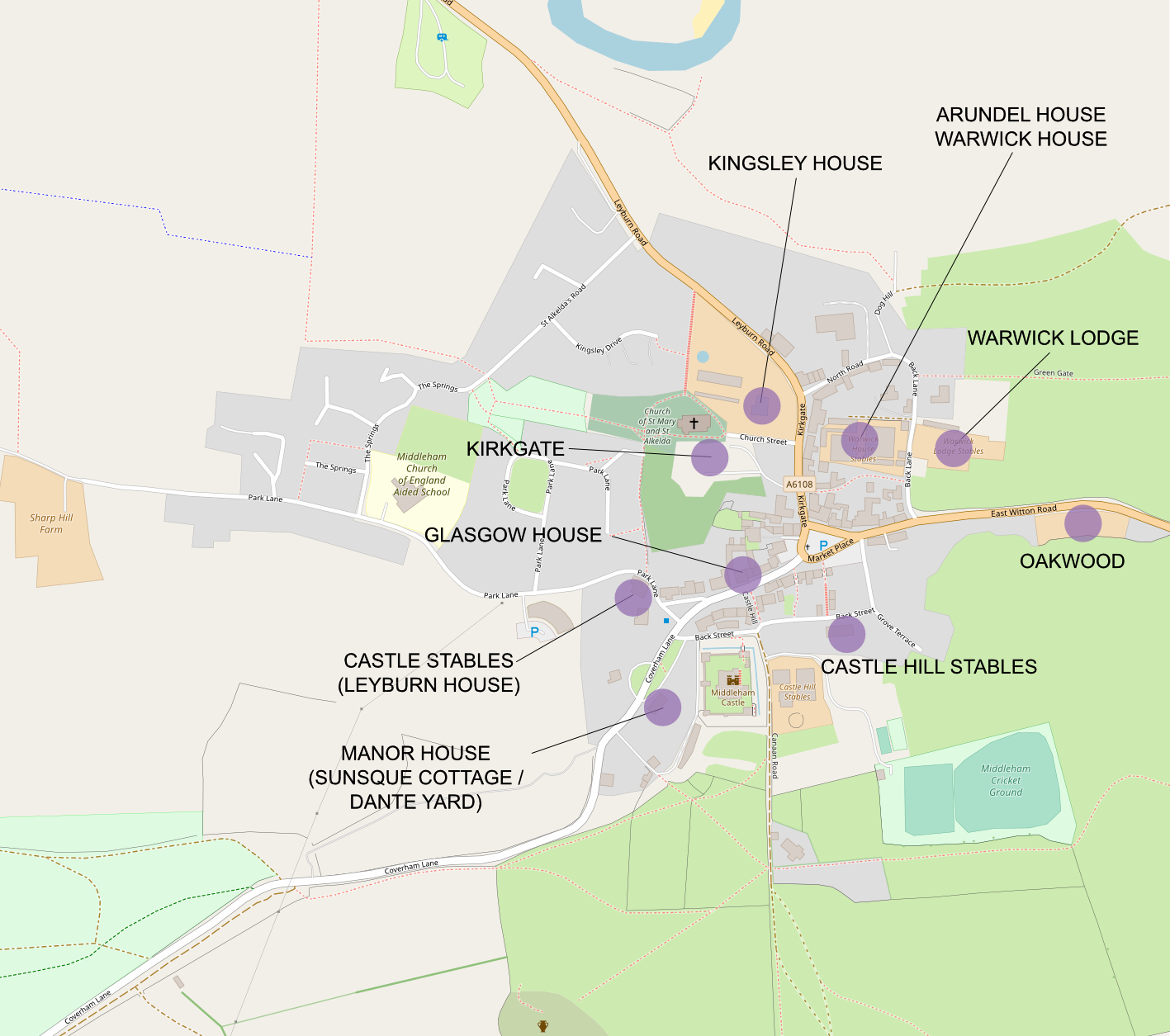
Watson Lonsdale, born in 1792, was the son of Middleham trainer John Lonsdale and brother-in-law of jockey and trainer Bob Johnson. When John Lonsdale died on 17th October 1825 Watson Lonsdale took charge at Tupgill, at a time when Bob Johnson was still riding for the stable. Watson then trained with jointly with Bob Johnson at Tupgill after Johnson retired from race riding, when the stable had such stars as Beeswing, Tomboy and Nutwith. When Bob Johnson retired in 1843 Tupgill was taken over by George Dawson at a time when Watson Lonsdale was appointed trainer to Lord Glasgow, who owned Glasgow House. He was probably at Glasgow House from 1844 to 1846, although it may well have been longer, but unfortunately, such was the irascible character of Lord Glasgow that he was unlikely to have lasted more than 2 to 3 years. He then moved to Belleisle, Richmond to continue his training career, and died there on 13th October 1868.
1849-1852 William Arnull
William Arnull, born in 1820, was from a family steeped in racing from the early 1700s, especially in the Newmarket area. Samuel Arnull, who died on 5th February 1800, famously rode the first Derby winner Diomed (SR 2046) in 1780, and went on to win the race on 3 other occasions; 1782 Assassin (SR 2003), 1787 Sir Peter Teazle (SR 2062), 1798 Sir Henry (SR 1965). Sam's brother John notched up 4 Derby wins, notably in 1784 on Serjeant (SR 1936), in 1790 on Rhadamanthus (SR 2029), in 1796 on Didelot (SR 1925) and finally in 1807 on Election (SR 2030). John's son, also named William, but known as Bill, landed 3 Derby victories, starting in 1804 on Hannibal (SR 1946), then aboard Octavius (SR 2015) in 1812, and finally on Blucher (SR 1984) in 1814. William senior married twice, firstly Frances, daughter of the royal trainer Frank Neale in 1811, but she died in 1814. He then married Elizabeth Weston in 1817 and they had a son, William, born at Woodditton in September 1820 and baptized at All Saints Church, Newmarket on 13th November 1820. William senior was trainer to Lord Lichfield, but died at a young age, leaving a large family, and William's son Charles became Head Lad to Harlock in Newmarket. William junior was too heavy to carve out a career as a jockey, but began training aged 17 in Belgium before moving to France to train for the Vervan Society. However, in late 1849 he moved to Middleham, training privately at Glasgow House in the West End area of the town, for Lord Glasgow, whose advice was, 'my horses should know no road but that which leads them straight to the winning post.' By 1851 he had a string of 8 horses, including Knight of the Garter and Nondescript, but the association with Lord Glasgow ended in 1852 and by 1854 he had returned to Newmarket where he trained for the rest of his life, having initially set up his Albert Street stables as a satellite yard in addition to Lord Glasgow's in Middleham.
1852-1854 Robert L'Anson
Robert L'Anson senior, born in Middleham in 1818, was from a family steeped in racing history having had trainers in Malton, Epsom and Newmarket. In 1850 Robert was private trainer to the Marquis of Waterford where his son, Robert junior, was born in 1850 and went on to carve out his own training career, notably in several stables in the vicinity of Epsom racecourse, enjoying his first mount on Derby Day 1861. Robert senior moved to Middleham in 1852 to train at Glasgow House for Lord Glasgow, training 16 horses in 1853 and remaining for a further year until the relationship with Lord Glasgow came to an end.
1855-1865 John Dawson
John Dawson, the youngest of the famous Gullane Dawson brothers, was born in 1827 and later worked for his brother Tom at Brecongill and Tupgill. In late 1855, on Wednesday 28th November, Lord Glasgow removed all of his 15 horses from Newmarket and took them to his Glasgow House Stables in Middleham where he installed John Dawson as his private trainer. John had previously served as Head Lad for brother Tom at Brecongill, and afterwards at Tupgill, for a period of 9 years and was ready to launch his own training career. The arrangement with Lord Glasgow lasted for almost exactly a year until November 1856 when the good Lord removed his horses. However, John Dawson stayed on at Glasgow House and was certainly still in residence in March 1863.
September 1865 Tom S Dawson
In September 1865 Lord Glasgow fell out yet again with one of his trainers, this time over a disappointing run by The White Duck in the Yorkshire Oaks. He decided to install Tom S Dawson, son of the Tupgill trainer Tom Dawson, in Glasgow House to train his string. Five horses were sent from York immediately after the Yorkshire Oaks, and the remainder from Whitewall followed a few days later.
1880-1890 Martha Birch
In the 1881 Census Glasgow House was occupied by Martha Birch, a widow aged 60, along with her daughter Annie 20 and 3 domestic servants. It is not certain whether the stables were leased to someone else.
Thomas Osborne Chaloner, born in Middleham in 1865, was the oldest son of Thomas and Ellen Chaloner, trainer and jockey. By the 1870s the family had moved to Newmarket and he was educated at Bury St Edmund Grammar School from 1879 to 1883. When Tom senior died at the young age of 46 in 1886 his wife Ellen, just 43 at the time and with 8 children to raise, took over at Osborne House, successfully applying for a trainer's licence, although it appears Tom junior had to be the registered trainer. Indeed, one of the controversial winners trained at Osborne House was his first winner as a trainer, Jacob, who won 2 races on consecutive days at Hampton Court racecourse in 1886. He married Jem Godding's daughter in early 1888 and took stables at Fitzroy House where he started training for Mr R Williamson that October. He soon moved on to Cavendish House in 1889. He later went on to train at Stockbridge House from 1890, training Marco to win the 1895 Cambridgeshire for owner Mr Francis Luscombe. When Francis Luscombe removed his horses from Stockbridge House Chaloner's business model did not add up and he was bankrupted in 1898 with a deficit of about £2,154 owed to numerous small creditors including his staff. The contents of Stockbridge House were auctioned in February 1898. He moved back to Middleham to train at Sundial Cottage/Glasgow House from late 1898 until 1903, but then returned to Newmarket to work for his brother George Chaloner. He died at Crescent Villa on 29 November 1937 after being in failing health for some time and is buried in the Cemetery. His widow, Kate Mary, continued to live on at 36 Rous Road and died in 1953 aged 88.
1900-1909 Mary Ingram
In the 1901 Census Glasgow House was occupied by Mary Ingram 68, the domestic cook in charge, along with 3 housemaids. It is uncertain whether the stables were leased to someone else.
April 1909-March 1911 J Adams
J Adams junior, born in 1863, was training at Glasgow House in April 1909 and continued there until early 1911. Although he enjoyed limited success, some of his best horses were Robert the Bruce, Blundella and Noturna. He won a modest Maiden Hurdle at the February 1910 Doncaster Hunt meeting with Yvette 5/2 when owned by Mrs Pease and ridden by himself. In December 1910 he suffered a blow when the majority of his horses departed for the stables of J Fairfax Blakeborough, and by March 1911 Adams had also departed, to leave Glasgow House available to Captain Charles Elsey.
February 1910 Barnby Maiden Hurdle at Doncaster Hunt YVETTE 5/2 owned by Mrs Pease, trained and ridden by J Adams junior
April 1911-1912 Captain Charles Elsey
Charles Frederick Elsey, son of William Elsey who ran a successful stable at Baumber, Lincolnshire where Charles was born on 10th December 1882, began training in April 1911 at Glasgow House, saddling his first winner, Wireworm at Beverley on Thursday 25th May 1911. The horse, owned by Elsey's uncle, J G Elsey, won the Etton Selling Welter Handicap Plate at 10/1. He did not remain in Middleham for any length of time, departing by the end of the 1912 season when his string numbered 14, and serving later in the Yorkshire Hussars and then the 5th Royal Berkshire Regiment during the First World War, when he reached the rank of Captain and gained the Military Cross. After the War he decided to go into farming in Lincolnshire rather than resuming his training career, but in 1921 he did return to the training ranks at Clyde House, in Ayr. He gained an early success soon after his return, sending out Westmead to win the 1924 Ayr Gold Cup, and by 1926 he had purchased Highfield Stable in Malton where he made a name for himself. At the end of a long, successful career he had trained 6 Classic Winners, namely Musidora who won the 1949 1000 Guineas and Oaks, Frieze who won the 1952 Oaks, Nearula who won the 1953 2000 Guineas, Honeylight who captured the 1956 1000 Guineas, and Cantelo who landed the 1959 St Leger which, as a Yorkshireman at heart would have given him most pleasure. Meanwhile, in July 1911 Glasgow House was mysteriously advertised To Let by Miss Calvert for the period August and September. At that time the property consisted of 6 bedrooms, 3 reception rooms, a large kitchen, many offices, a coach house and extensive stabling.
1911 Etton Selling Welter Handicap Plate at Beverley WIREWORM 10/1 owned by J G Elsey, trained by Charles Elsey and ridden by M Carron
1912 Leeds Handicap Plate at Pontefract POSTULUS 13/8 fav owned by J St V Fox, trained by Charles Elsey and ridden by J Clark
1912 Grand Stand Handicap at Beverley SLASH LANE 5/2 fav owned by J G Elsey, trained by Charles Elsey and ridden by A Templeman
1912 Holm Hill Handicap at Carlisle DERBY LAD 6/1 owned by J St V Fox, trained by Charles Elsey and ridden by Seymour
1912 Mandale Handicap at Stockton ANNIE BERRILL 8/1 owned by Captain G Portman, trained by Charles Elsey and ridden by Williams
1912 Lowther Welter Handicap at York SANDGLASS 9/4 fav owned by Sir William Cooke, trained by Charles Elsey and ridden by A Templeman
1949 1000 Guineas at Newmarket MUSIDORA (SR 1966) 100/8 owned by Norman Donaldson, trained by Charles Elsey and ridden by Edgar Britt
1949 Epsom Oaks MUSIDORA (SR 1966) 4/1 owned by Norman Donaldson, trained by Charles Elsey and ridden by Edgar Britt
1952 Epsom Oaks FRIEZE (SR 1990) 100/7 owned by Captain Alexander Keith, trained by Charles Elsey and ridden by Edgar Britt
1953 2000 Guineas at Newmarket NEARULA (SR 2036) 2/1 owned by William Humble, trained by Charles Elsey and ridden by Edgar Britt
1956 1000 Guineas HONEYLIGHT (SR 1905) 100/6 owned by Sir Victor Sassoon, trained by Charles Elsey and ridden by Edgar Britt
1959 St Leger at Doncaster CANTELO (SR 1996) 100/7 owned by William Hill, trained by Charles Elsey and ridden by Edward Hide
1912-1938 Letting and Livery
During the long period before the First World War and between the two Wars Glasgow House was used for a variety of purposes. A livery business and stables operated for a good number of years. Also, in July 1929 the House and stables were advertised to let. For a long period Matthew J Peacock used Glasgow House as an overflow yard from his Manor House Stables which were just across the road. It was not until April 1943 that they became a training stable in their own right again when J Russell took charge.
Matthew James Peacock, born in 1879, oldest son of Matthew Dobson Peacock, assisted his father at Manor House Stables right up to the time of his father's death on 13th September 1935 and then successfully applied for his own trainers licence. It was a remarkably successful few years for Matthew prior to the outbreak of War, winning more races between 1936 and 1939 than any other trainer in the country. He trained 78 runners in 1936, 71 in 1937, increased to 88 in 1938, but reduced to 72 in 1939. Such was his success that in 1938 he needed extra boxes and used Glasgow house, just across the roda, on and off from 1938 to 1943. In his very first year in 1935 he won the Manchester Cup with Moneybox, and in November 1936 he captured the Manchester November Handicap with Newtown Ford. He attracted high profile owners like the Duke of Northumberland and the Duke of Roxburghe, in addition to Lord Joicey, Lord Glentoran, the Marquess of Londonderry and Sir Edward Hanmer. Then the War intervened, and numbers decreased to the mid-thirties, but towards the end of the War, as numbers picked up, he won the Derby, run at Newmarket, with Dante, who had been beaten a neck in the 2000 Guineas. Despite being made favourite for the St Leger, he was withdrawn just before the race, some reports claimed through leg stiffness, while others suggested the horse was going blind. Whatever the true story, the brilliant Dante never raced again and was sent off to stud. The brown horse with a small white star was bred at Manor House Stud and was owned by Sir Eric Ohlson. It showed tremendous potential at two, winning the 1944 Coventry Stakes at Royal Ascot, following up in the Middle Park Stakes at Newmarket. However, it was in the Derby that Dante (SR 2155) showed his true potential, winning at 100/30 fav by 2 lengths and a head. In 1944 a special bay colt by Nearco out of Rosy Legend was born at Manor House Stud and was named Sayajirao. When sold to HH The Maharaja of Baroda for a record 28,000 guineas, clearly the Maharaja had high hopes for him, and he was not disappointed, as the colt went on to win the 1947 Lingfield Derby Trial, the Irish Derby at the Curragh, the St Leger at Doncaster, and in 1948 captured the Hardwicke Stakes at Royal Ascot.
April 1943-1944 James Russell
James Russell, born in 1880 and more often known as Jim, trained at Mablethorpe prior to the outbreak of the Second World War, but on Saturday 17th April 1943 he transferred his string of 12 horses to Glasgow House. Few Northern courses were allowed to stay open during the War, but Russell wanted easier access to those which were, namely Stockton and Pontefract, as petrol rationing was a problem for him. He continued with 12 horses in 1944, but by 1945 he had returned to his former stables at Mablethorpe, having enjoyed limited success in Middleham.
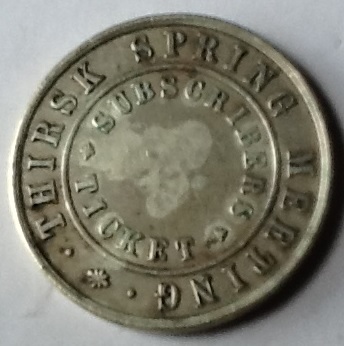
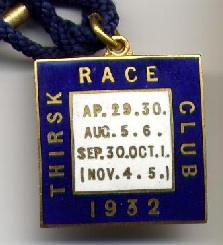
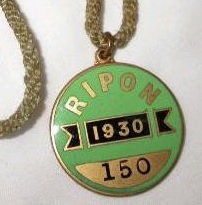
1948-1951 Richard Dick Colven
Richard Colven, universally known as Dick, was born on 8th September 1901 in Bethnall Green, London but moved to Australia with his family when they emigrated there. He served his apprenticeship in Australia and was still there in 1923 when he got married, and the couple later adopted a boy in 1931 who they named Albert Gordon Colven. Dick rode in Australia for a short time, and also in both Egypt and Singapore, but by 1930 the couple were back in England. He continued his riding career in England from 1930 through to 1946, the highlight of which was partnering Lady Electra to win the 1943 War time Lincoln Handicap, which was staged at Pontefract, by a comfortable 2 lengths from Coroado Grey and Tony when owned by W Richardson and trained by C Ray. He applied for a trainer's licence in 1948, moving to live at West Witton, on the outskirts of Middleham, and using Glasgow House as his stables and Ernest Girling as his head lad. Starting in 1948 with a string of just 6, but a year later he had increased it to 15. His first winner, Pilpay 10/1, was in the Londesborough Selling Handicap at Doncaster on 7th May 1948 when partnered by his adopted son Gordon. In 1948-1950 he trained his best horse, Barnes Park for H Lane, running just once as a two-year-old, but in 1949 contesting all 3 Classics. The horse had been bought at Goffs sales as a yearling for 3100 gunieas in September 1947 by H Lane, a Newcastle builder who had named it after his estate. It was ridden at Epsom by W Cook, who had come over from Australia, and it was his first mount in an English Classic. In the 2000 Guineas he was third beaten a short head and 4 lengths by Nimbus (SR 2012) and Abernant, the first time a photo-finish was used in a Classic. Sir Gordon Richards named Abernant as the fastest horse which he ever rode. In fourth place in the 2000 Guineas, just behind Barnes Park, was Amour Drake and the pair went on to the Epsom Derby. Barnes Park went to the Derby at Epsom with some confidence, but was 5th behind the brilliant Nimbus and Amour Drake when another photo-finish was necessary to divide them. In the St Leger he was offered at 40/1 and finished unplaced behind Ridge Wood (SR 1923). Richard bought over a friend of his from Australia, jockey Athol Mulley, and Athol partnered Barnes Park to a hollow 6 length victory in the Three Tuns 3-y-o Plate at Thirsk, but did not partner the horse in the St Leger. In 1950 Barnes Park was heavily supported for the Lincoln in the weeks prior to the race, being backed from 40/1 down to 16/1 even before the meeting began. In the event, Barnes Park finished a creditable fifth, but that was not enough for owner H Lane to allow Dick to continue to train the horse, and it was moved to a second stable, and shortly afterwards to George Boyd in Scotland. Ironically, Barnes Park won the 1951 Lincoln for H Lane and George Boyd. Dick spent two further years at Glasgow House, training 19 in 1950 and 12 in 1951. He then transferred his string just along the road, to Leyburn House, now the site of Castle stables. He remained there for 4 years, training 7 in 1952, 5 in 1953, a dozen in 1954 and 10 in 1955. After spending 8 years training at Middleham, in two different stables, he departed for New Zealand, and from there back to Victoria, Australia where he continued to train until his death on 14th December 1963 aged just 62.
1943 Lincoln Handicap at Pontefract LADY ELECTRA 9/2 fav owned by W Richardson, trained by C Ray and ridden by Dick Colven
1948 Londesborough Selling Handicap at Doncaster PILPAY 10/1 owned by Mr Poole, trained by Dick Colven and ridden by Gordon Colven
1949 2000 Guineas at Newmarket BARNES PARK 100/1 owned by H Lane, trained by Dick Colven and ridden by Ken Gethin was 3rd behind Nimbus (SR 2012)
1949 Epsom Derby BARNES PARK 22/1 owned by H Lane, trained by Dick Colven and ridden by W Cook was 5th behind Nimbus (SR 2012)
1949 Three Tuns 3-y-o Plate at Thirsk BARNES PARK 1/9 fav owned by H Lane, trained by Dick Colven and ridden by Athol Mulley
1949 St Leger at Doncaster BARNES PARK 40/1 owned by H Lane, trained by Dick Colven and ridden by W Cook was unplaced behind Ridge Wood (SR 1923)
1950 Smethwick Handicap Chase at Birmingham LOCKERBIE 13/2 trained by Dick Colven and ridden by M Hogan
1950 Hornby Castle handicap at Catterick BRISTERS BUTTONS 9/2 owned by B Braithwaite, trained by Dick Colven and ridden by Gordon Colven
1950 Crosshands Hurdle at Ayr BRISTERS BUTTONS 11/2 owned by B B Johnson, trained by Dick Colven and ridden by J Stevens
1951 Ingham Hurdle at Southwell FAIR RUN 9/4 fav trained by Dick Colven and ridden by J Stevens
1951 Southwell Hurdle TRAVELLER 11/10 fav trained by Dick Colven and ridden by R Curran
August 1952-January 1958 Ernest Joseph Carr
Ernest Joseph Carr, born on 19th October 1915, became an apprentice with Captain Cecil Boyd-Rochfort at Freemason Lodge, Newmarket in 1930 aged 15 and remained there for the conventional 5 years, riding on the flat during that time, but in 1936 he switched to jumps racing. He rode under National Hunt rules for 5 years, but unfortunately on Thursday 23rd May 1940 at Ludlow he sustained a career changing injury after an horrific fall. As a consequence of the injuries he sustained he had to undergo an operation and he loss part of his right leg which obviously meant that his riding career came to an end. He was not deterred however, and launched his training career in 1941, landing some prominent races, notably the historic Lanark Silver Bell, a Wills Silver Goblet and the Caledonian Hunt Cup. After training at Hurworth, Joe Carr moved his string of 6 to Glasgow House, maintaining a similar size string for a further couple of years before it increased to 10 in 1955, a dozen in 1956 and up to 16 in his final year in Middleham. In January 1958 he transferred his string of 16 horses to Hambleton Stables in Thirsk.
In April 1961 the Manchester businessman Ken Boardman employed William O'Brien as his trainer at Glasgow House, and during the 3 years the team were there they enjoyed considerable success despite having a very small string. Bill O'Brien, a former jump jockey who spent 18 years with Bill Dutton, had only taken out his trainer's licence in early 1961, but he punched above his weight for the Stockport based Boardman. The string numbered just 6 in 1961, yet they won 8 races during that season, including Church Stretton winning the Wensley Stakes at Catterick at 50/1. Church Stretton was a 400 guineas purchase as a yearling for Boardman from Shropshire breeder Jack Young, and was touted as a 2000 Guineas hope after landing the Warwickshire 3-year-old Handicap at Birmingham, but in the event he did not take part. In October 1962 the team landed a 102/1 treble at Wolverhampton when Grey Jet 9/2 set the ball rolling in the Lichfield Plate in the hands of Lester Piggott. That win was followed by Church Stretton 11/4 in the October Handicap Plate when Piggott was again in the saddle, and the treble was completed by Chestergate 4/1 in the Tettenhall Stakes when ridden by Peter Robinson. Although O'Brien only had 7 horses in 1962 and 1963, he continued to win more than the expected number of races. African Drum won the Union Jack Stakes at Liverpool by an impressive 10 lengths and was immediately confirmed as a Derby entry. In the 1963 Epsom Derby African Drum 28/1 was ridden by Doug Smith, but was unplaced behind Relko (SR 2109). There is little doubt that Bill O'Brien did exceptionally well with limited resources and a string never larger than 7, yet despite that Ken Boardman decided to move his horses to Tarporley to be trained by Eric Cousins in December 1963.
1961 Wensley Stakes at Catterick CHURCH STRETTON 50/1 owned by Ken Boardman, trained by Bill O'Brien and ridden by Peter Robinson
1962 Warwickshire 3-y-o handicap at Birmingham CHURCH STRETTON 7/1 owned by Ken Boardman, trained by Bill O'Brien and ridden by Jimmy Mullane
October 1962 Lichfield plate at Wolverhampton GREY JET 9/2 owned by Ken Boardman, trained by Bill O'Brien and ridden by Lester Piggott
October 1962 October Handicap Plate at Wolverhampton CHURCH STRETTON 11/4 fav owned by Ken Boardman, trained by Bill O'Brien and ridden by Lester Piggott
October 1962 Tettenhall Stakes at Wolverhampton CHESTERGATE 4/1 owned by Ken Boardman, trained by Bill O'Brien and ridden by Peter Robinson
1963 Union Jack Stakes at Liverpool AFRICAN DRUM 4/5 fav owned by Ken Boardman, trained by Bill O'Brien and ridden by Peter Robinson
1963 Epsom Derby AFRICAN DRUM 28/1 owned by Ken Boardman, trained by Bill O'Brien and ridden by Doug Smith unplaced behind Relko (SR 2109)
September 1972-December 1974 Peter Chisman
Peter Chisman, born in Epsom on 26th February 1926, was always likely to spend his working career in racing and rode as a very successful amateur between 1948 and 1952, landing the Amateur Jockeys championship in the 1950-51 season. Prior to his successful amateur riding career Peter had completed active service between 1941 and 1945 in the Second World War. In 1951 he won the Kim Muir Chase at the Cheltenham Festival for amateur riders aboard Mighty Fine, and repeated the success a year later when partnering Menzies. He also won the prestigious National Hunt Chase at Cheltenham in 1951 on Cushendun, although the race was run on Thursday 26th April 1951, the normal March meeting having been abandoned due to bad weather. In 1952 he decided to turn professional and enjoyed 5 years riding as a professional jumps jockey. His highest profile success was guiding Larry Finn 10/1, trained by Neville Crump at Warwick House, to victory in the Becher Chase at Aintree, and he also enjoyed success with Lady Joicey's Astara who gained 7 victories in a row between 7th November and 26th December 1953 when trained by Stuart Wight at Grantshouse. During his time as a professional jockey he spent time at Melton Avril Vasey's Kingsley House stables, marrying Vasey's third daughter Pat on 1st March 1954, the couple having announced their engagement the previous October, and were later blessed with two sons, Shane and Mark. In 1957, aged 31, he retired from race riding, and although he left racing temporarily to start a haulage business, the lure of racing was too great and he joined Fred Rimell at Kinnersley where Peter assisted him before moving on to John Readon at Epsom. In 1962 Peter thought the time was right to launch his own training career at Alcester, training the likes of Chiron, Dark Sultan and Randfontein. In 1972 he transferred his string to historic Glasgow House, Middleham, close to where his father-in-law Melton Avril Vasey still trained at Kingsley House. The undoubted stable star during his time at Glasgow House was Mrs Louise Detarding's Ebony Prince who won the W D & H O Wills Premier Chase Qualifier at Doncaster, won 6 races and was second on 5 occasions in 12 races during a purple patch from October 1971 to 1973, and was touted at one stage as a Gold Cup hopeful. In his first year at Glasgow House his string numbered 15, but it reduced to 12 in 1973 and 11 in 1974, and by the end of 1974 he retired from the training ranks, enabling Major Tom Page to take over. Peter died on 19th August 1984 in Worthing aged just 58.
1951 Kim Muir Chase at the Cheltenham Festival MIGHTY FINE 2/1 fav owned by L B Chugg, trained by Fred Rimell and ridden by Peter Chisman
1951 National Hunt Chase at the Cheltenham in April CUSHENDUN 10/1 owned by Mrs L Brotherton, trained by Bobby Renton and ridden by Peter Chisman
1952 Kim Muir Chase at the Cheltenham Festival MENZIES 4/1 fav owned by J R Gilman, trained by Syd Mercer and ridden by Peter Chisman
1952 Becher Chase at Aintree LARRY FINN 10/1 owned by B Bealby, trained by Neville Crump and ridden by Peter Chisman
7th November 1953 Ellerton Novices Chase at Catterick Bridge ASTARA 11/10 fav owned by Lady Joicey, trained by Stuart Wight and ridden by Peter Chisman
13th November 1953 Belsay Chase at Newcastle ASTARA 4/9 fav owned by Lady Joicey, trained by Stuart Wight and ridden by Peter Chisman
20th November 1953 Town Moor Novices Chase at Doncaster ASTARA 8/15 fav owned by Lady Joicey, trained by Stuart Wight and ridden by Peter Chisman
28th November 1953 Wothestone Novices Chase at Wetherby ASTARA 8/13 fav owned by Lady Joicey, trained by Stuart Wight and ridden by Peter Chisman
55h December 1953 Club Hunters Chase at Manchester ASTARA 1/2 fav owned by Lady Joicey, trained by Stuart Wight and ridden by Peter Chisman
13th December 1953 Wigan Novices Chase at Haydock ASTARA 4/9 fav owned by Lady Joicey, trained by Stuart Wight and ridden by Peter Chisman
26th December 1953 York Novices Chase at Wetherby ASTARA 2/9 fav owned by Lady Joicey, trained by Stuart Wight and ridden by Peter Chisman
1971 W D & H O Wills Premier Chase Qualifier at Doncaster EBONY PRINCE 5/1 owned by Mrs Louise Detarding, trained by Peter Chisman and ridden by Brian Fletcher
1972 Coot Handicap Chase at Newcastle EBONY PRINCE 5/2 fav owned by Mrs Louise Detarding, trained by Peter Chisman and ridden by Brian Fletcher
1972 Barton Handicap Hurdle at Catterick PERSIAN VELVET 5/4 fav trained by Peter Chisman and ridden by G Griffin
1972 Haydock Handicap EBONY PRINCE 4/6 fav owned by Mrs Louise Detarding, trained by Peter Chisman and ridden by K B White
1972 Wagtail Handicap Chase at Newcastle HODDEN GREY 15/8 trained by Peter Chsiman and ridden by Brian Fletcher
1972 Clifford Chase at Wetherby HODDEN GREY 11/8 fav trained by Peter Chsiman and ridden by Brian Fletcher
December 1974-early 1975 Major Tom B Page
A keen amateur rider in the 1950s, Major Tom B Page owned, trained and rode a number of his own horses which enabled him to contest numerous races for amateur riders, not least the Royal Artillery Gold Cup at Sandown. After a successful Army career, when he trained horses whilst in Germany, he took out a one year permit trainer's licence which a year later converted into a full licence. In 1958 he transferred to Newlands Stables, Lambourn, replacing Major Tim Fitzgeorge-Parker. Major Page had come second to dual Royal Artillery winner Snowshill Jim in the 1957 Royal Artillery Gold Cup at Sandown, albeit beaten by 12 lengths. Later that year he rode another of his own horses, Craiglockhart in the King Lear Amateur riders Handicap Steeplechase at Stratford when beaten by Panhandle. In the 4 years Page was at Newlands, Lambourn he continued to ride his own horses at Cheltenham, Newbury, Aintree and Sandown, and was successful in landing the 1958 Amateur Riders Handicap Chase at Warwick in December. The next year he rode Ballybar in the Free Run Handicap Steeplechase at Newbury, but was no match for Taxidermist 7/2 partnered by John Lawrence, later Lord Oaksey. Major Tom Page, and his wife Joan, whose great uncle was the wealthy Newcastle businessman Sir John Priestman, left Newlands, Lambourn in 1961 bound for Warwick. He trained at Warwick for 11 years, meeting along the way Peter Chisman, and when he sold up in 1974 he headed North to meet up with Chisman again. Peter had trained at Glasgow House since September 1972, but decided to retire and offer the stables to his good friend. Major Tom Page took charge at Glasgow House in December 1974 and was able to take over all of Peter's string of 13 horses, although in the end he only remained at Glasgow House for a few months.
Thomas Fairhurst, universally known by his nickname Squeak, was born at Horden, County Durham on 5th June 1927, moving to Middleham to serve his apprenticeship with Matt Peacock at his Manor House stables in 1942. It was a fabulous time to join the stable because the stable star, and one of the best racehorses of all time, Dante was in the stable, winning the 1945 Derby run that year at Newmarket because of the Second World War. He remained with Matt Peacock until 1946, but then National Service meant he joined the Army in Germany, a time which he probably enjoyed because he was in the Army riding school. On leaving the Army he returned to Middleham to the stables of Jack Fawcus, from where he rode the majority of his winners. He rode his first winner, Chanlana, on 20th May 1955 at Haydock, ultimately chalking up 16 Flat race winners until 1967. In 1962 he moved across the town to Ernie Weymes stable where he had a dual-purpose role, riding and acting as Head Lad. He remained with Weymes until the end of the 1968 season, and in 1969 he successfully applied for a trainer's licence, moving into The Cottage in Middleham, travelling daily to train from Tupgill Stables. He celebrated his first winner, Brython, at Pontefract on 16th April 1969 ridden by Eric Larkin, the first of 18 winners in his inaugural training season, and continued to churn out the winners whilst residing at The Cottage and training at Tupgill, landing the 1972 Tennent Trophy with Brython, the 1975 Firth of Clyde Stakes at Ayr with Woodsome, and guiding the juvenile Pandu to 5 successive victories at the start of the 1976 season before being put in his place by Godswalk in the Norfolk Stakes at Royal Ascot. However, in 1977 Tommy moved from The Cottage, and Tupgill, and transferred to historic Glasgow House, just off the market place, enjoying his best season ever, notching up 34 wins, although Glasgow House originally had about 27 boxes, so Squeak had to add 10 more boxes just to stable his string, and did not have to resort to using some of his former Tupgill boxes. He continued to use Glasgow House as his base for the final 15 years of his training career, culminating in a Royal Ascot success in the 1988 Windsor Castle Stakes with Barrys Gamble. In 1984 he gained his only classic winner when Tophams Taverns won the Manx Derby at Castletown on the Isle of Man. Throughout his career he trained 65 jump race winners and 406 Flat race winners, the last of which was Celestine at Catterick Bridge on 18th September 1993, but he also tutored a number of apprentices to forge out successful riding careers, notably Joe Fanning, who was at Glasgow House for 4 years and who later was a hugely influential jockey at nearby Kingsley House for Mark Johnston. Tommy retired at the end of the 1993 season and handed the reigns to son Chris who had assisted him for so long, as had another son Anthony for some time. He left immediiately for Scarborough, enjoying a lengthy retirement, but died in Scarborough on Friday 23rd September 2022 aged 95.
1969 Garrowby Stakes at York BRYTHON 6/1 owned by W L B Hale, trained by Tommy Fairhurst and ridden by Eric Larkin
1970 Manchester Memorial Cup Handicap at Haydock Park BRYTHON 7/1 owned by W L B Hale, trained by Tommy Fairhurst and ridden by Clive Eccleston
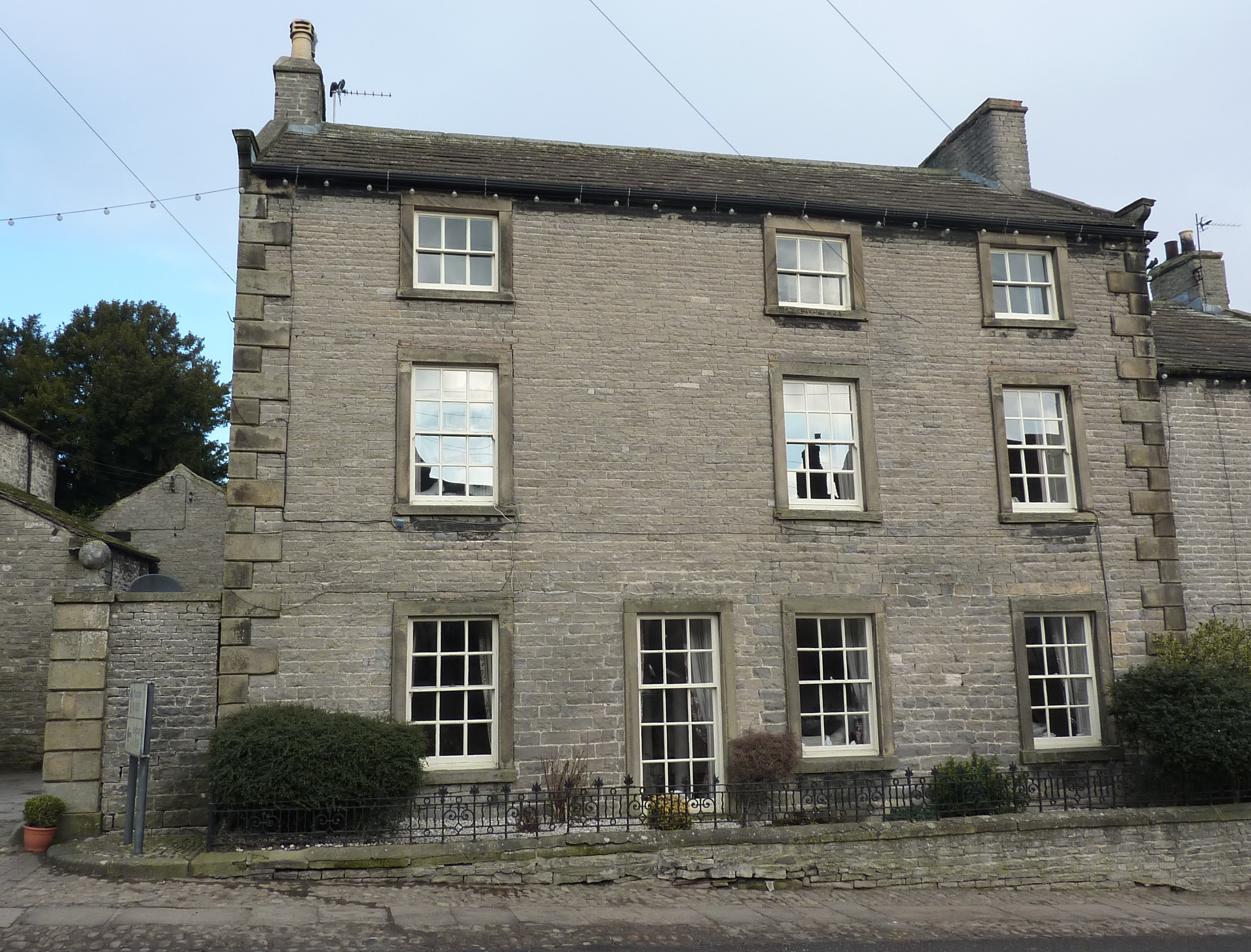
1970 Wills Castella Handicap at Ayr BRYTHON 7/2 owned by W L B Hale, trained by Tommy Fairhurst and ridden by Clive Eccleston
1970 Brocklesby Plate at Doncaster ROYAL LOUISE 20/1 owned by P Hornsby, trained by Squeak Fairhurst and ridden by Paul Tulk
1971 Liverpool Spring Cup at Aintree BRYTHON 8/1 owned by W L B Hale, trained by Tommy Fairhurst and ridden by Alan Horrocks
1971 Wills Castella Handicap at Ayr BRYTHON 9/4 fav owned by W L B Hale, trained by Tommy Fairhurst and ridden by Alan Horrocks
1972 Tennent Trophy at Ayr BRYTHON 11/4 owned by W L B Hale, trained by Tommy Fairhurst and ridden by Clive Eccleston
1975 Firth of Clyde Stakes at Ayr WOODSOME 11/8 fav trained by Squeak Fairhurst and ridden by Ernie Johnson
1976 Revival Maiden Stakes at Teesside Park PANDU 4/1 owned by C Barber-Lomax, trained by Squeak Fairhurst and ridden by Clive Eccleston
1976 Hillhouse 2-y-o Stakes at Ayr PANDU 8/13 fav owned by C Barber-Lomax, trained by Squeak Fairhurst and ridden by Clive Eccleston
1976 Richmond Stakes at Catterick Bridge PANDU 1/2 fav owned by C Barber-Lomax, trained by Squeak Fairhurst and ridden by Clive Eccleston
1976 Lily Agnes Stakes at Chester PANDU 5/1 owned by C Barber-Lomax, trained by Squeak Fairhurst and ridden by Stuart Webster
1976 Gallows Lane Stakes at Thirsk PANDU 4/9 fav owned by C Barber-Lomax, trained by Squeak Fairhurst and ridden by Clive Eccleston
1977 Tilcon Trophy at Redcar RELATIVE EASE 14/1 trained by Squeak Fairhurst and ridden by Clive Eccleston
1978 Bretby Handicap at Newmarket CODED SCRAP 13/2 trained by Squeak Fairhurst and ridden by Neil Crowther
1979 Brocklesby Stakes at Doncaster BOHLE 13/2 trained by Squeak Fairhurst and ridden by W Higgins
1981 Dick Turpin Stakes at York BRIGHT VIEW 7/1 owned by J Turney, trained by Squeak Fairhurst and ridden by O Gray
1981 Convivial Stakes at York REBOLLINO 10/1 owned by C H Newton jnr ltd, trained by Squeak Fairhurst and ridden by Edward Hide
1984 Carlsberg Nursery Trophy at Newmarket CRAGSIDE 6/1 trained by Squeak Fairhurst and ridden by Brian Rouse
1984 Manx Derby in the Isle of Man TOPHAMS TAVERNS owned by R Topham, trained by Squeak Fairhurst
1988 Racing Post Maiden Auction Series Stakes at Beverley BARRYS GAMBLE 16/1 owned by North Cheshire Trading & Storage ltd, trained by Squeak Fairhurst and ridden by Simon Whitworth
1988 Massey Two-Year-Old Trophy BARRYS GAMBLE 4/5 fav owned by North Cheshire Trading & Storage ltd, trained by Squeak Fairhurst and ridden by Simon Whitworth
1988 Windsor Castle Stakes at Royal Ascot BARRYS GAMBLE 5/2 owned by North Cheshire Trading & Storage ltd, trained by Squeak Fairhurst and ridden by Pat Eddery
1990 C F Silver Jubilee Handicap Stakes at Doncaster BARRYS GAMBLE 9/2 owned by North Cheshire Trading & Storage ltd, trained by Squeak Fairhurst and ridden by Pat Eddery
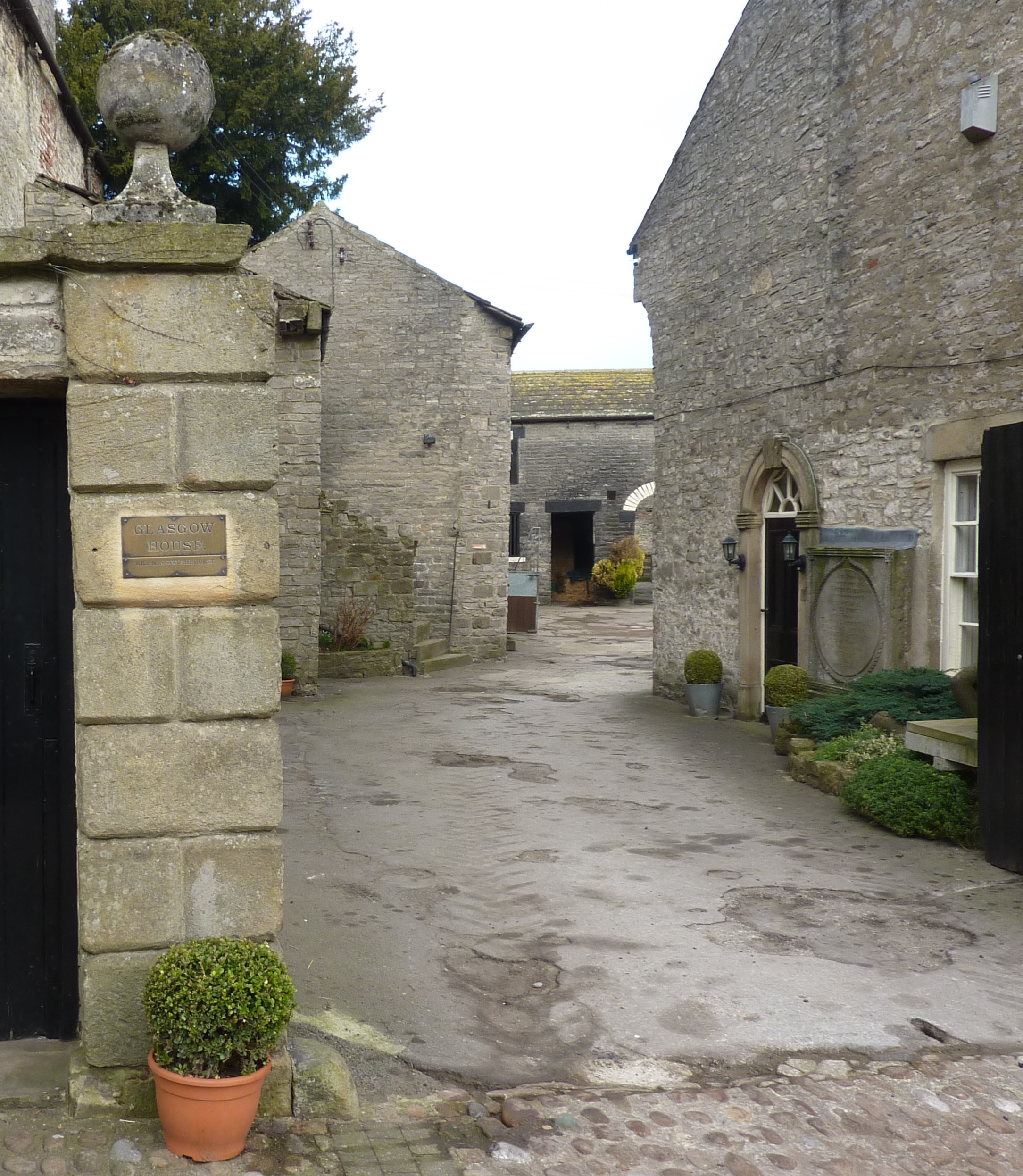
Tommy Fairhurst's 16 winners as a jockey
20th May 1955 Scurry Plate at Haydock Park CHANLANA 33/1 trained by Jack Fawcus, ridden by Tommy Fairhurst
16th July 1955 Monkland Handicap Stakes at Hamilton Park CHANCE VIEW 100/6 trained by Jack Fawcus, ridden by Tommy Fairhurst
2nd April 1956 Jesmond Plate at Newcastle NORTHMAYNE 3/1 trained by Jack Fawcus, ridden by Tommy Fairhurst
26th June 1956 at Redcar CHANLANA 5/1 trained by Jack Fawcus, ridden by Tommy Fairhurst
18th July 1956 Ross Maiden Plate at Lanark LIGHT FAIR 6/4 fav trained by Jack Fawcus, ridden by Tommy Fairhurst
18th August 1956 Summer Handicap at Stockton TALE OF TWO CITIES 5/2 trained by Jack Fawcus, ridden by Tommy Fairhurst
17th June 1964 Swale Stakes at Ripon TAKE THE PLUNGE 33/1 trained by Ernie Weymes, ridden by Tommy Fairhurst
10th April 1965 Birdforth Handicap Stakes at Thirsk TAKE THE PLUNGE 100/7 trained by Ernie Weymes, ridden by Tommy Fairhurst
2nd June 1965 Dobson Peacock 3-y-o Handicap at Newcastle TAKE THE PLUNGE 7/2 trained by Ernie Weymes, ridden by Tommy Fairhurst
26th June 1965 Lonsdale Auction Stakes at Doncaster SICA WOOD 9/4 jt fav trained by Ernie Weymes, ridden by Tommy Fairhurst
10th July 1965 Bothal 2-y-o Stakes at Newcastle SICA WOOD 2/1 trained by Ernie Weymes, ridden by Tommy Fairhurst
27th June 1966 Melmerby 2-y-o Plate at Ripon LUCKY STREAK 33/1 trained by Ernie Weymes, ridden by Tommy Fairhurst
23rd July 1966 Double Diamond Handicap Stakes at Ripon TAKE THE PLUNGE 15/8 fav trained by Ernie Weymes, ridden by Tommy Fairhurst
26th April 1967 Grewelthorpe 2-y-o Stakes at Ripon RED DESIRE trained by Ernie Weymes, ridden by Tommy Fairhurst
10th June 1967 Whitsuntide 2-y-o Stakes at Haydock RED DESIRE 5/2 trained by Ernie Weymes, ridden by Tommy Fairhurst
12th July 1967 Red House 2-y-o Stakes at Doncaster RED DESIRE 11/2 trained by Ernie Weymes, ridden by Tommy Fairhurst
Christopher William Fairhurst, son of trainer Tommy 'Squeak' Fairhurst, was born on 16th August 1957 and was destined to become a jockey and then forge a career as a trainer. He partnered his first winner, Brigant 2/1 jt fav, in the Crailing Novices Hurdle at Kelso on 1st March 1975, following up at Ayr on the same horse on 10th March.
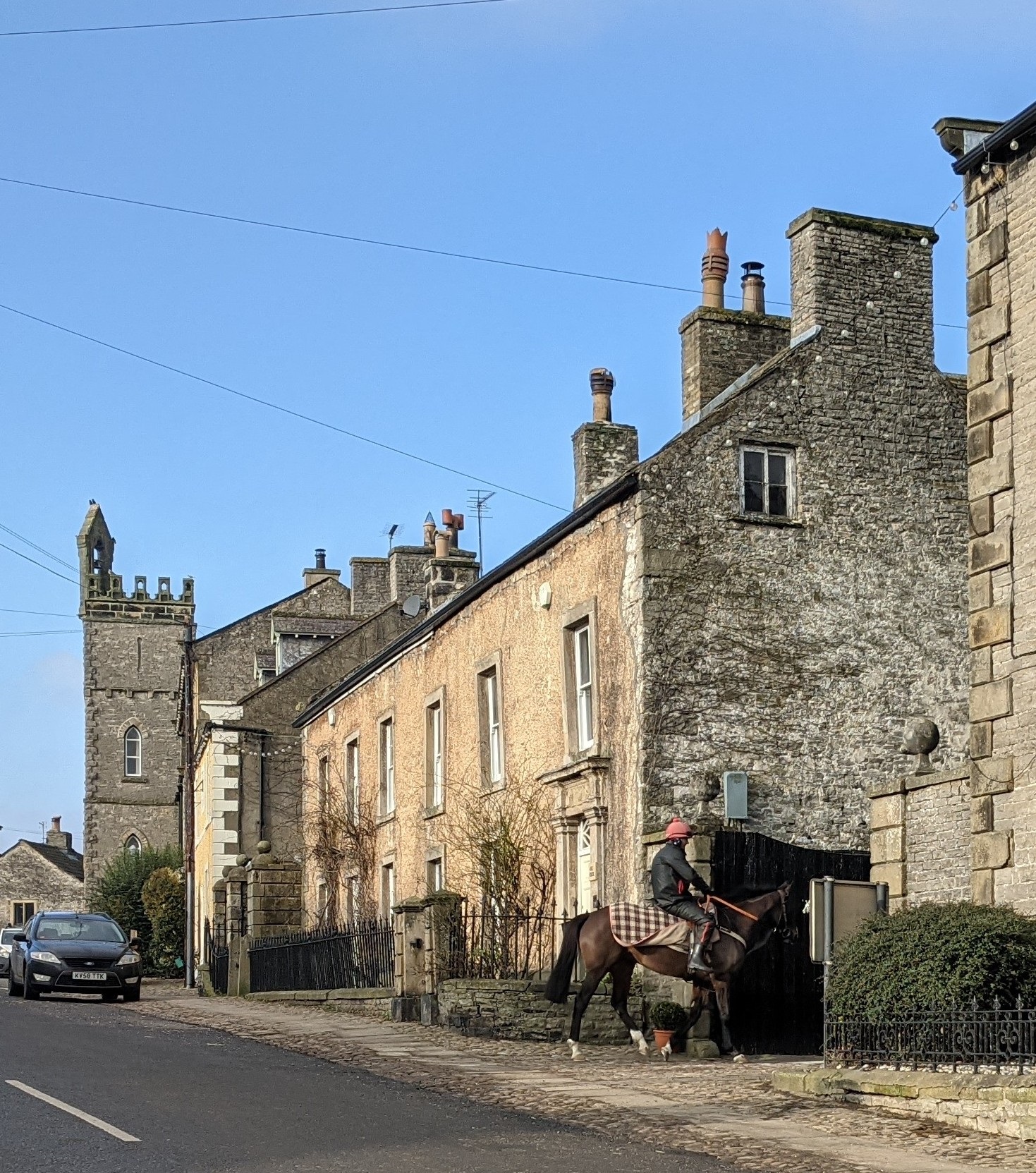
1975 Crailing Novices Hurdle at Kelso BRIGANT 2/1 jt fav, owned and trained by Squeak Fairhurst and ridden by Chris Fairhurst
1975 Strathaven Handicap at Lanark RELATIVE EASE 13/2 trained by Tommy Fairhurst and ridden by Chris Fairhurst
1998 European Breeders Fund Tote Novice Stakes at Pontefract BOLDLY GOES 20/1 owned by G H & S Leggott, trained by Chris Fairhurst and ridden by Ray Cochrane
1998 Hartshorne Motor Group Stakes at Wolverhampton BOLDLY GOES 7/2 owned by G H & S Leggott, trained by Chris Fairhurst and ridden by Dean McKeown
1998 Lewis Geipel Memorial Challenge Cup at Thirsk BOLDLY GOES 7/2 owned by G H & S Leggott, trained by Chris Fairhurst and ridden by Dean McKeown
1998 K M Group Services Maiden Stakes at Redcar RINGSIDE JACK 20/1 owned by M J G Partnership, trained by Chris Fairhurst and ridden by Carl Lowther
1998 Listed Champion 2-y-o Trophy at Ripon BOLDLY GOES 10/1 owned by G H & S Leggott, trained by Chris Fairhurst and ridden by Dean McKeown
1999 Maestro Handicap at Musselburgh PERFECT PEACH 25/1 owned by Mrs Ann Morris, trained by Chris Fairhurst and ridden by Tyrone Williams
2000 Charles Henry Memorial Handicap at York BOLDLY GOES 14/1 owned by G H & S Leggott, trained by Chris Fairhurst and ridden by Joe Fanning dead-heated with Friar Tuck
2000 ukbetting Handicap at Newcastle BOLDLY GOES 15/2 owned by G H & S Leggott, trained by Chris Fairhurst and ridden by Ray Cochrane
2000 Sanderson Truck All New Transit Handicap at Beverley RINGSIDE JACK 12/1 owned by M J G Partnership, trained by Chris Fairhurst and ridden by Joe Fanning
2000 FM Listeners Handicap at Chester RINGSIDE JACK 12/1 owned by M J G Partnership, trained by Chris Fairhurst and ridden by Joe Fanning
2002 Shergar Cup Challenge Handicap at Ascot KINGS WELCOME 7/2 fav owned by G H & S Leggott, trained by Chris Fairhurst and ridden by Richard Hughes
2004 Weatherbys Bank Novices Hurdle at Catterick RAHWAAN 7/1 owned by Six Iron Partnership, trained by Chris Fairhurst and ridden by N Hannity
2004 Lakeside Handicap at Doncaster RAHWAAN 9/2 fav owned by Six Iron Partnership, trained by Chris Fairhurst and ridden by Johnny Murtagh

2005 Viacom Handicap at Carlisle PASSION FRUIT 25/1 owned by G H & S Leggott, trained by Chris Fairhurst and ridden by Joe Fanning
2005 Weatherbys Bank Handicap at Thirsk PASSION FRUIT 8/1 owned by G H & S Leggott, trained by Chris Fairhurst and ridden by Dean McKeown
2005 NSPCC Handicap at Newcastle PASSION FRUIT 7/2 fav owned by G H & S Leggott, trained by Chris Fairhurst and ridden by Paul Mulrennan
2006 EBF Fillies Handicap at Carlisle PASSION FRUIT 4/1 owned by G H & S Leggott, trained by Chris Fairhurst and ridden by Dean McKeown
2006 EBF Cheltenham & Three Counties Listed Flat race at Cheltenham BURNT OAK 4/1 fav owned by Glasgow House Racing Syndicate, trained by Chris Fairhurst and ridden by Mick Fitzgerald
2017 Graham Wylie Foundation Stakes at Newcastle BENADALID 7/1 owned by Mrs Shirley France, trained by Chris Fairhurst and ridden by Royston Ffrench
2017 Thirsk Racecourse Perfect Wedding Venue Handicap THE ARMED MAN 8/1 owned by Mrs C A Arnold, trained by Chris Fairhurst and ridden by Paula Muir
2017 Digital Skills Summit Handicap at Newcastle THE ARMED MAN 11/2 owned by Mrs C A Arnold, trained by Chris Fairhurst and ridden by Paula Muir
2017 Ladies Day September Handicap at Thirsk THE ARMED MAN 9/2 owned by Mrs C A Arnold, trained by Chris Fairhurst and ridden by Paula Muir
2017 Bet Toteexacta Handicap at Thirsk THE ARMED MAN 9/2 owned by Mrs C A Arnold, trained by Chris Fairhurst and ridden by Paula Muir
2018 Woodford Reserve Handicap at Chester BENADALID 4/1 owned by Mrs Shirley France, trained by Chris Fairhurst and ridden by Michael Stainton
2018 Pete Sharp Memorial Handicap at Thirsk THE ARMED MAN 9/2 owned by Mrs C A Arnold, trained by Chris Fairhurst and ridden by Paula Muir
2017 Summer Festival Handicap at Redcar THE ARMED MAN 3/1 owned by Mrs C A Arnold, trained by Chris Fairhurst and ridden by Paula Muir
2018 Ripon Bell-Ringer Handicap BENADALID 16/1 owned by Mrs Shirley France, trained by Chris Fairhurst and ridden by James Sullivan
2019 Arlo Handicap at Doncaster BENADALID 13/2 owned by Mrs Shirley France, trained by Chris Fairhurst and ridden by Joe Fanning
2019 Market Cross Jewellers Handicap at Redcar THE ARMED MAN 11/2 owned by Mrs C A Arnold, trained by Chris Fairhurst and ridden by Paula Muir
2019 City of Ripon Handicap BENADALID 9/4 fav owned by Mrs Shirley France, trained by Chris Fairhurst and ridden by Danny Tudhope
2020 Yorkshire Garden Racecourse Handicap at Ripon BENADALID 9/1 owned by Mrs Shirley France, trained by Chris Fairhurst and ridden by Paul Mulrennan
2020 BetVictor Handicap at Haydock THE ARMED MAN 12/1 owned by Mrs C A Arnold, trained by Chris Fairhurst and ridden by Paula Muir
2021 Wilmot-Smith Memorial Handicap at Ripon BENADALID 4/1 owned by Mrs Shirley France, trained by Chris Fairhurst and ridden by Paul Mulrennan
2022 Ladies Evening Handicap at Wetherby THE ARMED MAN 11/4 owned by Mrs C A Arnold, trained by Chris Fairhurst and ridden by Paula Muir
2022 Bryan Bell Pratt Memorial Sprint Handicap at Catterick THE ARMED MAN 4/1 owned by Mrs C A Arnold, trained by Chris Fairhurst and ridden by Paula Muir
THE DUCHESS (1816 St Leger, 1819 Pontefract Gold Cup, York Gold Cup, Richmond Gold Cup)
FILHO DA PUTA (1815 St Leger, 1816 Doncaster Cup)
JERRY (1824 St Leger, York St Leger)
THEODORE (1822 St Leger, Manchester Gold Cup)
BARNES PARK (1949 2000 Guineas 3rd)



